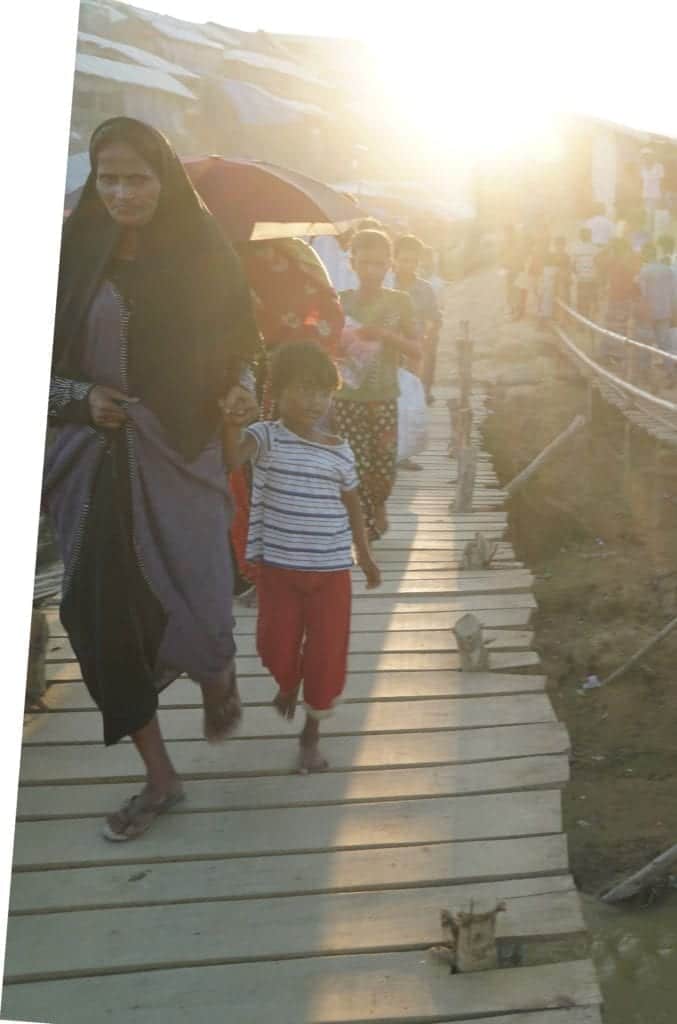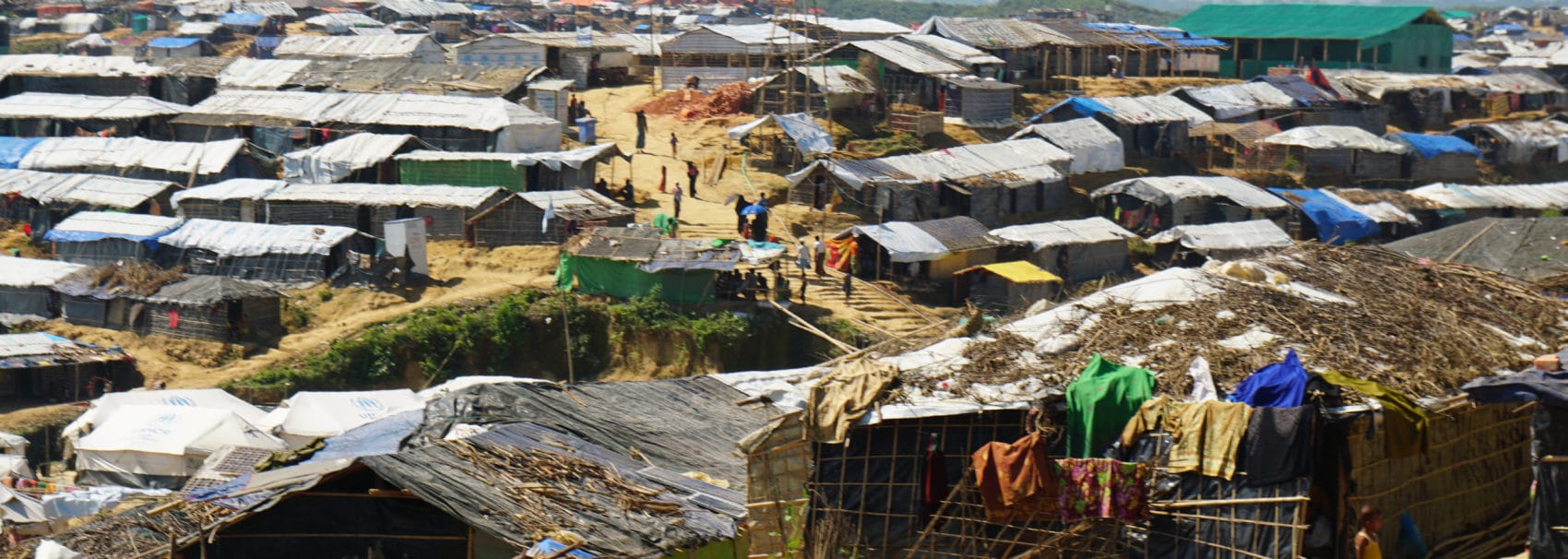How a deeper understanding of geology was able to alleviate water shortages for thousands of refugees in Bangladesh.
The data revealed that the geology of the Leda and Nayapara camps was far from the continuous, thick sandstone aquifer presupposed for the peninsula.
The Situation
The plight of nearly three-quarters of a million Rohingya refugees in Bangladesh is just one example of how the desperate need for water can become entwined with so many humanitarian crises across the globe.
In 2017, fleeing human rights abuses in neighbouring Myanamar, the refugees crossed by raft and by foot through jungle to camps on the Bangladesh’s Teknaf peninsula.

In the Kutupalong-Balukhali Expansion Camp, which holds more than half a million people, 6,000 shallow boreholes had been dug to provide water, but 80% of these were contaminated by E. coli from overflowing latrines and fecal sludge pits. A not unfamiliar problem in such dire circumstances.
The camp needed deeper, aquitard-protected, high-yielding aquifers to supply a sustainable source of clean drinking water through both the wet and dry seasons. Meanwhile, the smaller but hard-pressed Leda and Nayapara refugee camps were trucking water in during the five-month dry season of November to March.
Long term, these camps needed groundwater resources to support the 70,000 strong refugee population through the most arid time of year.
The Geology
We generally think of Bangladesh as a densely populated, low-lying country that is periodically subject to flooding during seasonal monsoons, so it’s hard to imagine water scarcity being an issue. Yet, in the southern Teknaf peninsula, a combination of unfavourable hydrogeological conditions and inadequate infrastructure means exactly that.
Although monsoon rains bring up to 4,500 mm (15 feet) of precipitation a year, during the pronounced dry season any rainfall has a negligible impact on the recharge of groundwater aquifers or surface water reservoirs.
A geophysics team, from resource and infrastructure consultants Advisian was given the job of identifying drilling locations that would provide access to safe water as rapidly as possible in these camps.
To characterise the water resources available, the team turned to a number of Seequent products including Leapfrog and View (for 3D visualisation, collaboration and modelling) and Geosoft’s Oasis montaj (for geophysical analysis and modelling).
Paul Bauman, of the Advisian geophysics team, said that being able to look at the information in 3D made a valuable contribution to the success of the project.
“View, being cloud-based, is particularly valuable for these overseas humanitarian water relief projects. There may be United Nations users on the ground in Bangladesh, but United Nations High Commissioner for Refugees, their watch the program, is headquartered out of Geneva. So there may be people on three continents: Asia, Europe, and North America” [where Advisian is located].
Paul Bauman, Advisian
“They’re all looking at the same datasets, all having questions and queries, but perhaps have different interests. With View, everyone has control of the scale, and they can highlight the particular model features they’re interested in.”
Paul Bauman, Advisian
The Outcome
The data revealed that the geology of the Leda and Nayapara camps was far from the continuous, thick sandstone aquifer presupposed for the peninsula. The continuous aquifers found elsewhere in Bangladesh did not exist here, and the aquifers present were actually small and relatively discreet.
This led the UN to amend their strategy and expand existing water storage reservoirs, which were able to tide over the camps between rainy seasons.
Meanwhile, in the Kutupalong-Balukhali Expansion Camp, the data prompted a move away from the thousands of easily contaminated shallow hand-pumped wells (that would go dry in the drier season) to newer, deeper aquifers whose existence was demonstrated by the findings.
The newer aquifers are both highly productive and better protected. The UN can also drill fewer wells (which are costly to do) and can create centralised chlorinated water systems.
The Future
While Seequent technologies played their part in this crisis, this role was minor compared to the enormous contributions made by the people and teams on the ground.
Their efforts have guided this installation of hundreds of water-supply wells for the Rohingya refugees and deserve recognition for the suffering they have helped alleviate.
Though the camps have drinking water, the future of the Rohingya refugees is still uncertain and will remain arduous.
Photo credit: Paul Bauman. All images taken from the Kutupalong Megacmp, Kutupalong Extension Camp.





